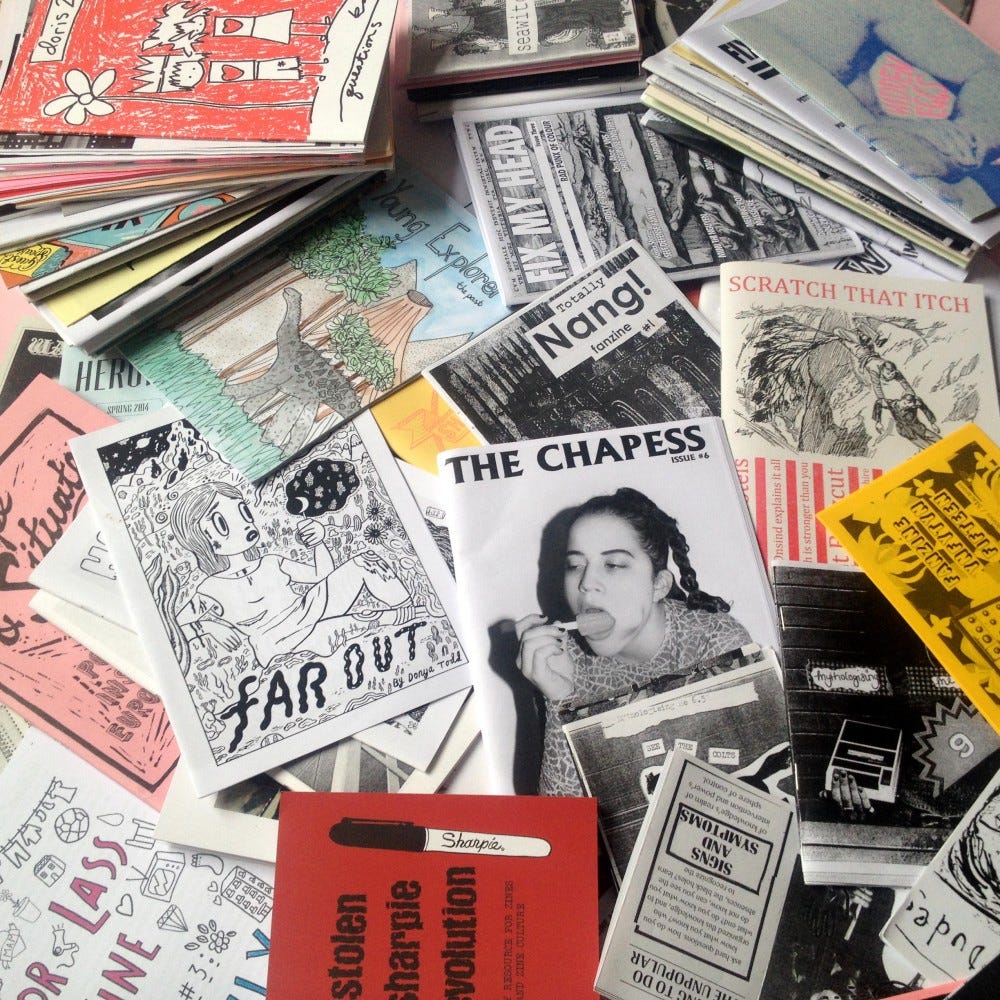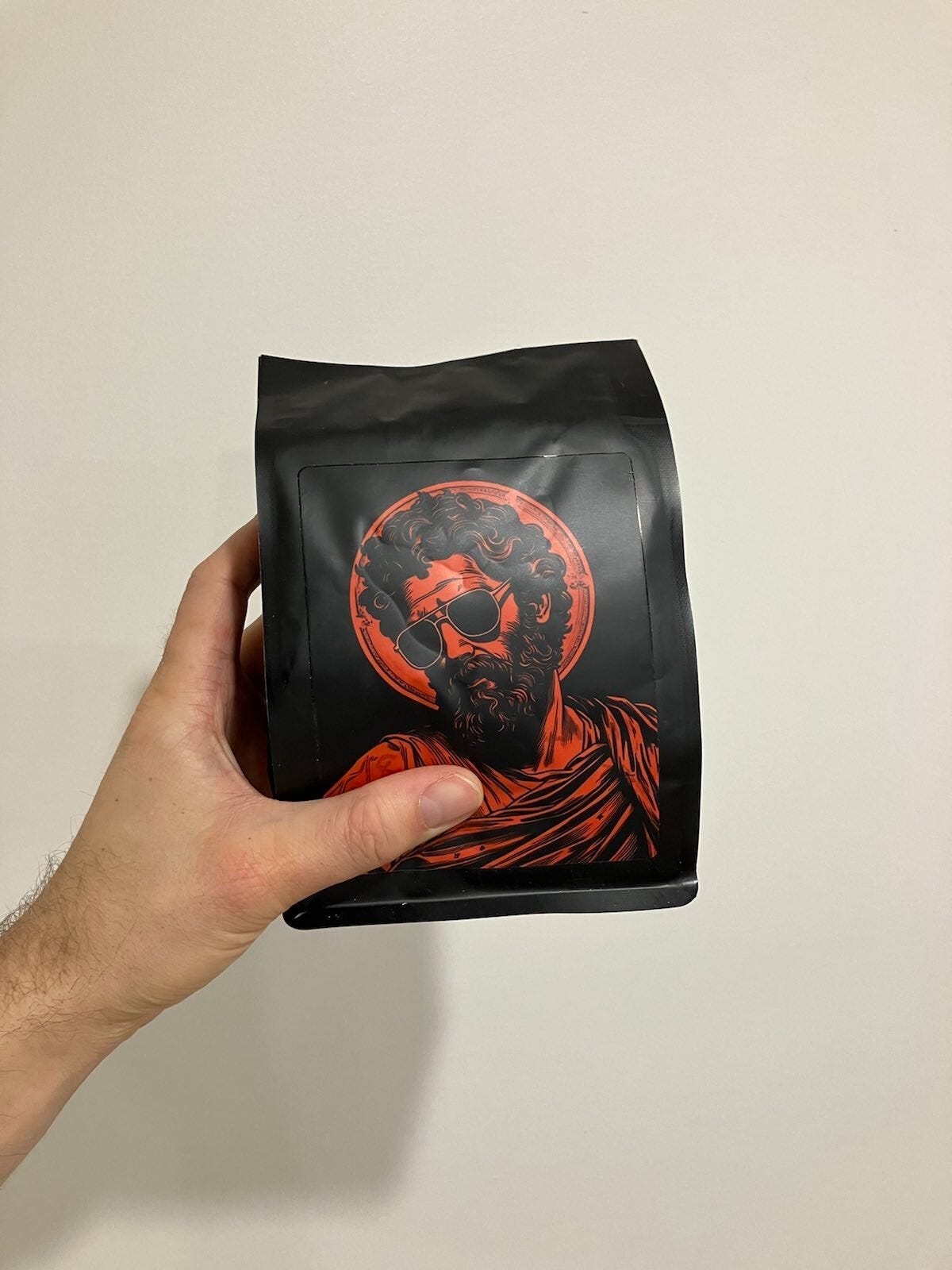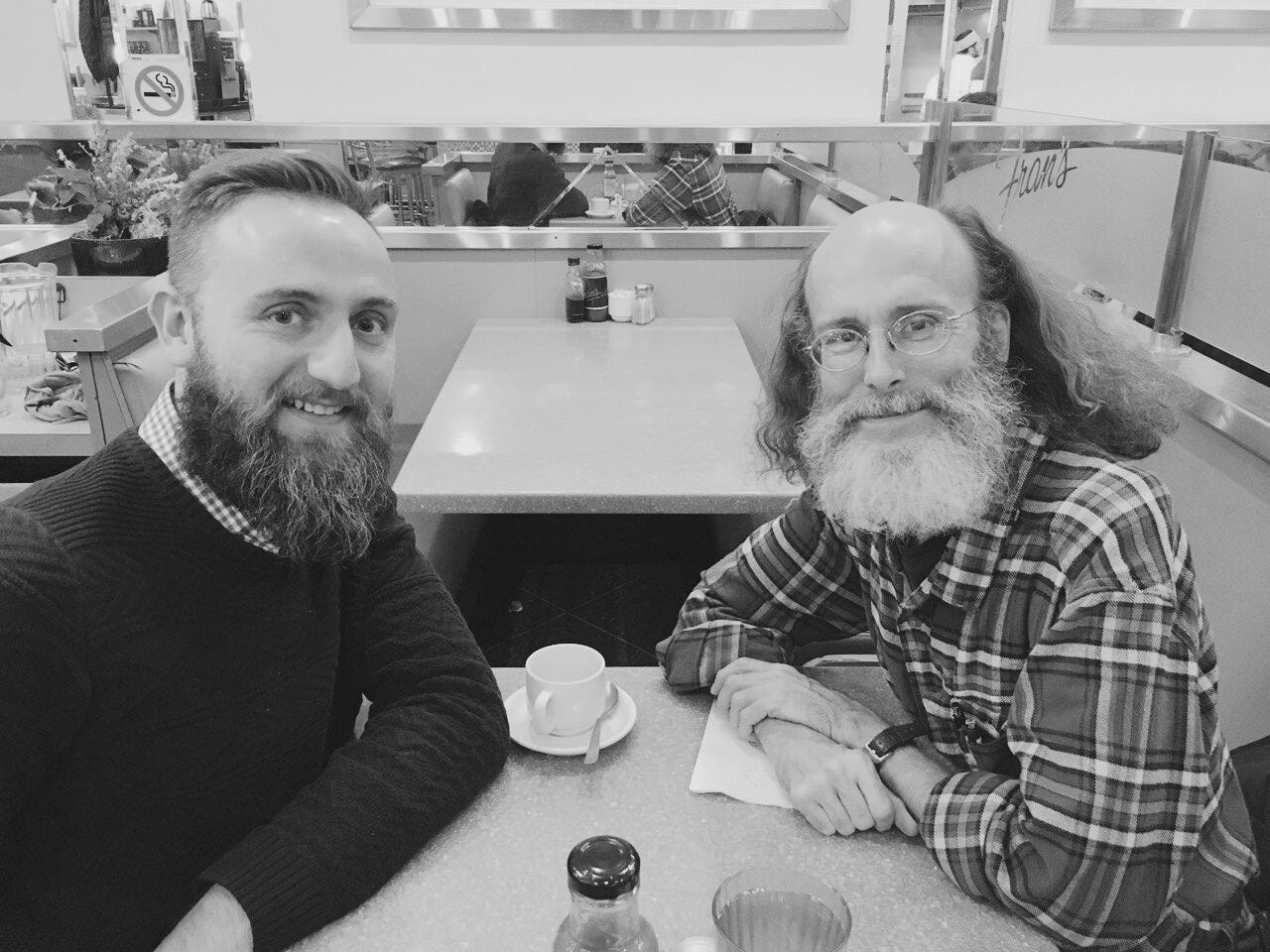Antimeme Zines
“An inexpensively produced, self-published, underground publication.” - The American Heritage Dictionary
I love zines. Zines shaped the punk scene. Thanks to the accessibility of copy shops, punk zines in the 1970s and 1980s sported a gritty aesthetic, exemplified by publications like Punk in the US and Sniffin’ Glue in the UK. In most punk scenes, a zine played a crucial role in scenemaking through its spiritedness, heart, and fuck you ethos, providing a DIY community-as-media platform.
I’ve wanted to create a Stoa-esque philosophy zine for a while, but with a catch: it cannot be replicated digitally. Upon purchase, a handshake agreement encourages that the zine will not be uploaded online. I like the idea that only a limited number of copies exist, let’s say 300, ensuring that only 300 individuals get to experience it. Perhaps there could be a ritualized method for passing on the zine after one has read it.
These zines will serve as “antimemes,” a term coined by a software engineer and the author qntm to describe something that discourages its dissemination. According to qntm, a meme is contagious, something that spreads; an antimeme does the opposite, preventing viral contagion. Examples he uses are boring data, nonsense passages, complicated equations, personal passwords, and gag orders. Just because something is memetic or antimemetic does not necessarily mean it is true or false, as both can be true or false.
Today, we live under the myth of the meme, which suggests that if something goes viral, it must be true. This assumption is false. Sometimes, it is true; other times, it is false. Furthermore, it can be immoral, ugly, and ultimately foolish. It can be wise to allow content to spread memetically, but at other times, it is wise to prevent such virality from occurring.
Zines are experiencing a resurgence, and the ethos of antimeme zines should prevail. In reality, this is close to the true essence of the zine, as it served two purposes for the punk scene:
Cohere local community,
Provide existential boundary work against the memetic influence of the mainstream,
Punk was not about going viral. Punk was about the shows, the people, the sex and violence of bodies smashing against each other, and most importantly, it was about community, where lost souls could finally feel seen, rebelling against having their spirit boxed in by what the culture at large mistakenly thought they should be.
Now, with new zinemakers creating zines and uploading them online right away, it just feels lame, spiritually impotent, and not what zines are supposed to be. Things are changing. The intellectual hipsters and their platforms—
, , —are now getting into the zine game. The throughline with these platforms is that they artfully weave online and IRL gatherings without getting captured by the anti-communal logic baked into Web 2.0.Zines sold online that can only be read in person seem like the less foolish move that artfully weaves both worlds together. The spiritual algorithm is this: find the others online (or rescue them from “The Matrix”), then cohere with them offline and create a scene. I am still discovering what our philosophical zine will look like and how it will be released.
As mentioned in the “Sensefully Selling Coffee” entry, Camille and I will be launching a coffee bean sometime this year called The Stoic Smile:
The bean will be sold with a zine, naturally leading to the following slogan:
A bean with a zine that becomes a scene.1
As the Ethiopian and Guatemalan blend, masterfully roasted by my friend
and his wife Jessica from the Evansville Coffee Company, readily awaits consumption, the zine is currently being created. Fortunately, we’re supported by an all-star team. , a designer extraordinaire and bassist for the epic band Birds of Maya, will handle the zine’s design, while , the famous Toronto cartoonist behind the graphic novel (and upcoming film) “Paying for It,” will serve as the illustrator.The zine’s content will remain a mystery for now, but it will include a simple coffee ritual. It invites us to transform the habit of drinking coffee into a conscious experience, allowing us to be fully present and engaged with the entire process. It will all be so epic that it will be hard to keep the whole thing antimemetic, but there is also an art to that.
Besides, we are not creating to become a meme on a screen, nor are we here to feed the spectacle and the transparentizing algos that prevent us from feeling seen. We are here to create a scene.
There will be a limited edition release of the coffee bag and zine, potentially coinciding with an in-person event upon the return of The Stoa. If you'd like to be among the first to be informed of its release, please provide your email below to be included on the eventual mailing list:
Also, I’ll be hosting a session during Limicon 2024 called “The Living Question” on March 21st @ noon Eastern. You can get access by purchasing a ticket to Limicon or becoming a member of Less Foolish. You can read more about the experience here, and the RSVP link is behind the paywall.
Keep reading with a 7-day free trial
Subscribe to Less Foolish to keep reading this post and get 7 days of free access to the full post archives.




